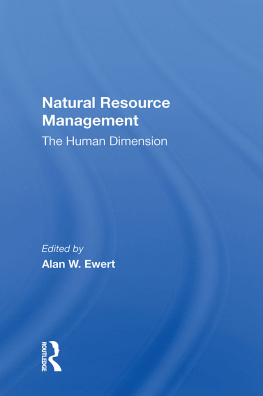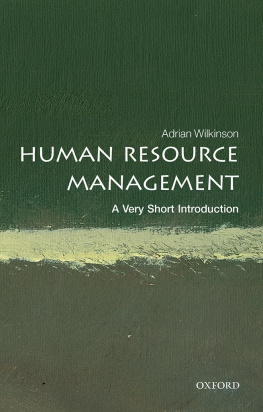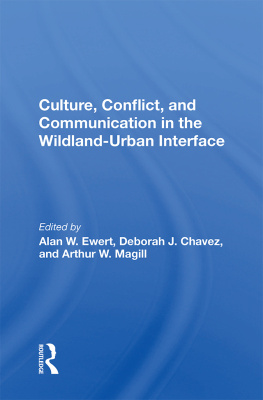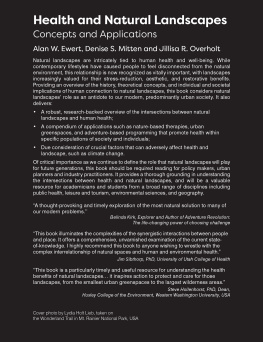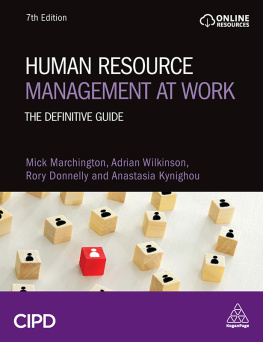Alan W. Ewert - Natural Resource Management: The Human Dimension
Here you can read online Alan W. Ewert - Natural Resource Management: The Human Dimension full text of the book (entire story) in english for free. Download pdf and epub, get meaning, cover and reviews about this ebook. year: 1996, publisher: Westview Press, genre: Romance novel. Description of the work, (preface) as well as reviews are available. Best literature library LitArk.com created for fans of good reading and offers a wide selection of genres:
Romance novel
Science fiction
Adventure
Detective
Science
History
Home and family
Prose
Art
Politics
Computer
Non-fiction
Religion
Business
Children
Humor
Choose a favorite category and find really read worthwhile books. Enjoy immersion in the world of imagination, feel the emotions of the characters or learn something new for yourself, make an fascinating discovery.
- Book:Natural Resource Management: The Human Dimension
- Author:
- Publisher:Westview Press
- Genre:
- Year:1996
- Rating:4 / 5
- Favourites:Add to favourites
- Your mark:
- 80
- 1
- 2
- 3
- 4
- 5
Natural Resource Management: The Human Dimension: summary, description and annotation
We offer to read an annotation, description, summary or preface (depends on what the author of the book "Natural Resource Management: The Human Dimension" wrote himself). If you haven't found the necessary information about the book — write in the comments, we will try to find it.
Natural Resource Management: The Human Dimension — read online for free the complete book (whole text) full work
Below is the text of the book, divided by pages. System saving the place of the last page read, allows you to conveniently read the book "Natural Resource Management: The Human Dimension" online for free, without having to search again every time where you left off. Put a bookmark, and you can go to the page where you finished reading at any time.
Font size:
Interval:
Bookmark:
Alan W. Ewert

605 Third Avenue, New York, NY 10017
2 Park Square, Milton Park, Abingdon, Oxon OX14 4RN
Product or corporate names may be trademarks or registered trademarks, and are used only for identification and explanation without intent to infringe.
Natural resource management: the human dimension / edited by Alan W.
Ewert.
p. cm. (Social behavior and natural resources series)
Includes bibliographical references.
ISBN 0-8133-8867-8 (softcover) 0-8133-3343-1 (paperback)
1. Natural resourcesManagement. 2. Human ecology. I. Ewert,
Alan W., 1949 . II. Series.
HC21.N295 1996
333.7dc20 95-50085
CIP
ISBN 13: 978-0-3671-5971-9 (pbk)
Human Dimensions Research: An Overview and Introduction
Specific Examples of Human Dimensions Research
The Applications of Human Dimensions Research in Management Settings
The Future of Human Dimensions
- PART ONE Human Dimensions Research: An Overview and Introduction
- 1 Human Dimensions Research and Natural Resource Management
- 2 Ecology of the Heart: Understanding How People Experience Natural Environments
- 3 Human Dimensions Research: Its Importance in Natural Resource Management
- PART TWO Specific Examples of Human Dimensions Research
- Introduction Specific Examples of Human Dimensions Research
- 4 Human Dimensions of Wildlife Management
- 5 Human Dimensions in Fisheries
- 6 Human Dimensions in Silviculture
- 7 Toward Better Integration of the Social and Biophysical Components of Ecosystems Management
- 8 Global Environmental Change and the Human Component
- PART THREE Management Applications of Human Dimensions Research
- Introduction The Applications of Human Dimensions Research in Management Settings
- 9 The Assessment of Social Impacts
- 10 Public Involvement and Interaction
- 11 Effectiveness of Public Involvement: Dealing with Contaminated Sites
- 12 Maps and Models for Natural Resource Management: Powerful Tools from the Social Sciences
- PART FOUR The Future of Human Dimensions Research
- Introduction The Future of Human Dimensions
- 13 Understanding Linkages of People, Natural Resources and Ecosystem Health
- 14 Social Science: A Lesson in Legitimacy, Power and Politics in Land Management Agencies
- 15 Human Dimensions Research: Perspectives, Expectations and the Future
- xviii
Font size:
Interval:
Bookmark:
Similar books «Natural Resource Management: The Human Dimension»
Look at similar books to Natural Resource Management: The Human Dimension. We have selected literature similar in name and meaning in the hope of providing readers with more options to find new, interesting, not yet read works.
Discussion, reviews of the book Natural Resource Management: The Human Dimension and just readers' own opinions. Leave your comments, write what you think about the work, its meaning or the main characters. Specify what exactly you liked and what you didn't like, and why you think so.

